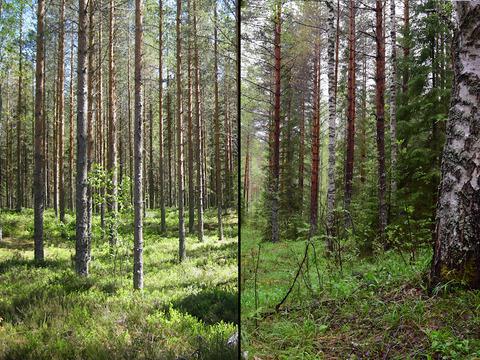当前位置:
X-MOL 学术
›
Funct. Ecol.
›
论文详情
Our official English website, www.x-mol.net, welcomes your
feedback! (Note: you will need to create a separate account there.)
Tree species mixing affects soil microbial functioning indirectly via root and litter traits and soil parameters in European forests
Functional Ecology ( IF 4.6 ) Pub Date : 2021-07-02 , DOI: 10.1111/1365-2435.13877 Lauren M. Gillespie 1 , Stephan Hättenschwiler 1 , Alexandru Milcu 1, 2 , Janna Wambsganss 3, 4 , Ammar Shihan 1 , Nathalie Fromin 1
中文翻译:

树种混合通过欧洲森林中的根和凋落物特性以及土壤参数间接影响土壤微生物功能
更新日期:2021-07-02
Functional Ecology ( IF 4.6 ) Pub Date : 2021-07-02 , DOI: 10.1111/1365-2435.13877 Lauren M. Gillespie 1 , Stephan Hättenschwiler 1 , Alexandru Milcu 1, 2 , Janna Wambsganss 3, 4 , Ammar Shihan 1 , Nathalie Fromin 1
Affiliation

|
- Plant community composition influences soil microbial communities through plant trait variations that lead to changes in nutrient and organic carbon inputs into the soil by root exudates and plant litter. Although plant litter and living roots are known to influence microbial functioning independently, their relative effects are rarely measured simultaneously in naturally occurring plant communities.
- Here, we sought to evaluate how forest floor litter and absorptive roots affect broad functions of soil microbial communities, and how this may be influenced by tree species mixing. To do so, forest floor litter, absorptive roots and soil were sampled from mono-specific and three-species mixed stands in four mature, natural forest ecosystems across Europe. The direct effects of tree species mixing, its indirect effects via litter and root traits, and the effects of soil parameters on microbial biomass, catabolic activity and diversity, and denitrification were analysed.
- Results did not show direct tree mixture effects on the soil microbial parameters we measured but did suggest indirect influences via tree mixture effects on traits of above-ground litter and absorptive roots and soil parameters. Mixed forests composed of any three tree species modified soil microbial functioning by influencing nutrient availability in forest floor litter and root resource acquisition. Tree mixing also modified soil microbial functioning and catabolic diversity by influencing soil fertility and physicochemical properties.
- Our findings suggest an indirect but present influence of tree species mixing on the activity of heterotrophic soil microbial communities across four different forest ecosystems ranging from Mediterranean to boreal forests. Our study contributes to a better mechanistic understanding of mixed tree species effects on soil microbial functioning via the modification of forest floor litter properties and traits of absorptive roots represented by the tree community beyond simple species number consideration, and potentially via soil properties.
中文翻译:

树种混合通过欧洲森林中的根和凋落物特性以及土壤参数间接影响土壤微生物功能
- 植物群落组成通过植物性状变化影响土壤微生物群落,导致根系分泌物和植物凋落物输入土壤的养分和有机碳发生变化。尽管已知植物凋落物和活根会独立影响微生物的功能,但它们的相对影响很少在天然植物群落中同时测量。
- 在这里,我们试图评估森林地面凋落物和吸收根如何影响土壤微生物群落的广泛功能,以及这可能如何受到树种混合的影响。为此,从欧洲四个成熟的天然森林生态系统中的单一物种和三物种混合林分中采集了森林地面凋落物、吸收性根和土壤。分析了树种混合的直接影响、其通过凋落物和根性状产生的间接影响,以及土壤参数对微生物生物量、分解代谢活性和多样性以及反硝化作用的影响。
- 结果没有显示树木混合物对我们测量的土壤微生物参数的直接影响,但确实表明通过树木混合物对地上凋落物和吸收根的性状和土壤参数的影响间接影响。由任何三种树种组成的混交林通过影响森林地面凋落物的养分有效性和根资源获取来改变土壤微生物的功能。树木混合还通过影响土壤肥力和物理化学特性来改变土壤微生物功能和分解代谢多样性。
- 我们的研究结果表明,树种混合对从地中海到北方森林的四种不同森林生态系统的异养土壤微生物群落的活动有间接但存在的影响。我们的研究有助于更好地理解混合树种对土壤微生物功能的影响,通过改变森林地面凋落物特性和由树木群落代表的吸收根特性,超越简单的物种数量考虑,并可能通过土壤特性。











































 京公网安备 11010802027423号
京公网安备 11010802027423号